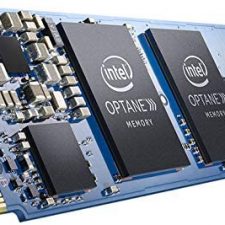Micron is scrapping its 3D XPoint development
About four or five years ago, I made a prediction: 3D XPoint will not get very far. I made that prediction based on the licensing model that Intel (and Micron) decided to adopt for them technology. It is a closed technology and one that was very restrictive. Being the history buff that I am, I anticipated that history was going to repeat itself here. For instance, Rambus released its RDRAM to compete with the then slower SDRAM technology. It was a closed and restricted technology. What was the industry’s response to it? DDR RAM. What happened to RDRAM? It disappeared. What about Fusion-io’s PCIe SSD? Again, a closed and non-standardized proprietary technology. The industry again responded and this time with NVMe.
If I learned anything with being in this sector, it is that you will not last long in the industry if you restrict your innovative technology. Now, what will or has replaced 3D Xpoint? Nothing exactly but NVMe SSDs are getting faster and hardware vendors such as Samsung (and their Z-NAND technology) are working hard to fill that void between RAM and Flash memory.
![Random [Tech] Stuff](https://koutoupis.com/wp-content/uploads/2022/01/koutoupis-logo-3.png)
